Forecasting with RNN¶
Jupyter Notebook Available
We have a 
Introduction to Neural Networks
We explain the theories of neural networks in this section. Please read it first if you are not familiar with neural networks.
In section Recurrent Neural Network we discussed the basics of RNN. In this section, we will build an RNN model to forecast our pendulum time series data.
RNN Model¶
We build an RNN model with an input size of 96, a hidden size of 64 and one single RNN block. We use L1 loss in the trainings.
from typing import Dict
import dataclasses
from torch.utils.data import Dataset, DataLoader
from torch import nn
import torch
@dataclasses.dataclass
class TSRNNParams:
"""A dataclass to be served as our parameters for the model.
:param hidden_size: number of dimensions in the hidden state
:param input_size: input dim
:param num_layers: number of units stacked
"""
input_size: int
hidden_size: int
num_layers: int = 1
class TSRNN(nn.Module):
"""RNN for univaraite time series modeling.
:param history_length: the length of the input history.
:param horizon: the number of steps to be forecasted.
:param rnn_params: the parameters for the RNN network.
"""
def __init__(self, history_length: int, horizon: int, rnn_params: TSRNNParams):
super().__init__()
self.rnn_params = rnn_params
self.history_length = history_length
self.horizon = horizon
self.regulate_input = nn.Linear(
self.history_length, self.rnn_params.input_size
)
self.rnn = nn.RNN(
input_size=self.rnn_params.input_size,
hidden_size=self.rnn_params.hidden_size,
num_layers=self.rnn_params.num_layers,
batch_first=True
)
self.regulate_output = nn.Linear(
self.rnn_params.hidden_size, self.horizon
)
@property
def rnn_config(self) -> Dict:
return dataclasses.asdict(self.rnn_params)
def forward(self, x: torch.Tensor) -> torch.Tensor:
x = self.regulate_input(x)
x, _ = self.rnn(x)
return self.regulate_output(x)
One Step Forecasting¶
Similar to Forecasting with Feedforward Neural Networks, we take 100 time steps as the input history and forecast 1 time step into the future, but with a gap of 10 time steps.
Training
The details for model training can be found in this 
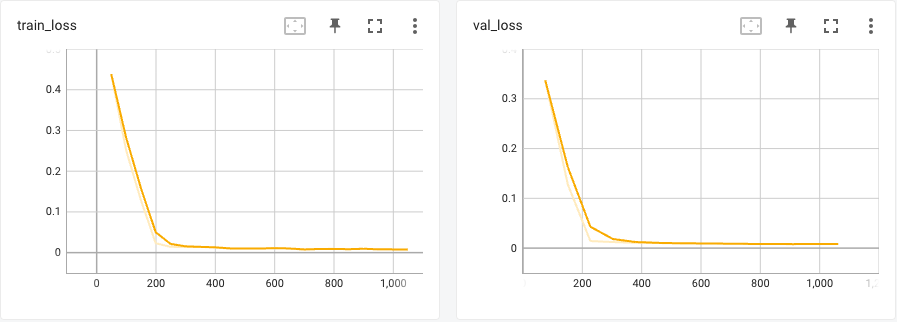
With just a few seconds of training, our RNN model can capture the pattern of the pendulum time series data.
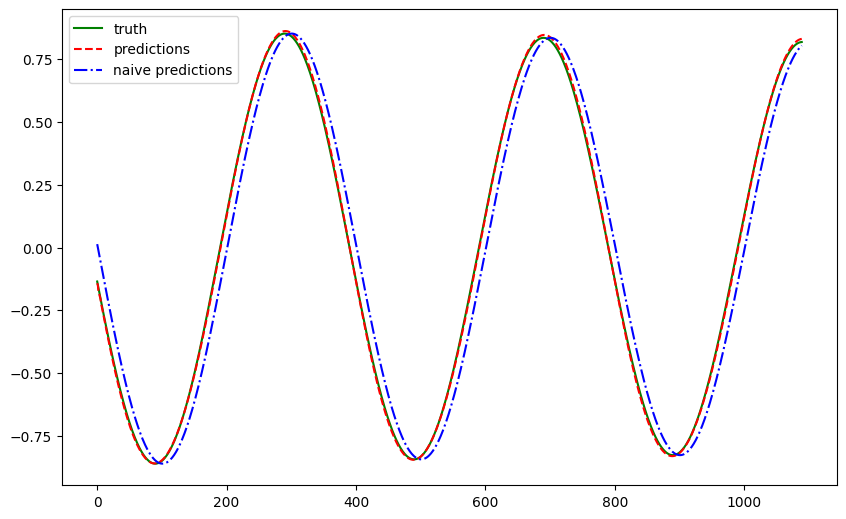
The metrics are listed in the following table.
| Metric | RNN | Naive |
|---|---|---|
| Mean Absolute Error | 0.007229 | 0.092666 |
| Mean Squared Error | 0.000074 | 0.010553 |
| Symmetric Mean Absolute Percentage Error | 0.037245 | 0.376550 |
Multi-Horizon Forecasting¶
We also trained the same model to forecast 3 steps into the future and also with a gap of 10 time steps.
Training
The details for model training can be found in this 
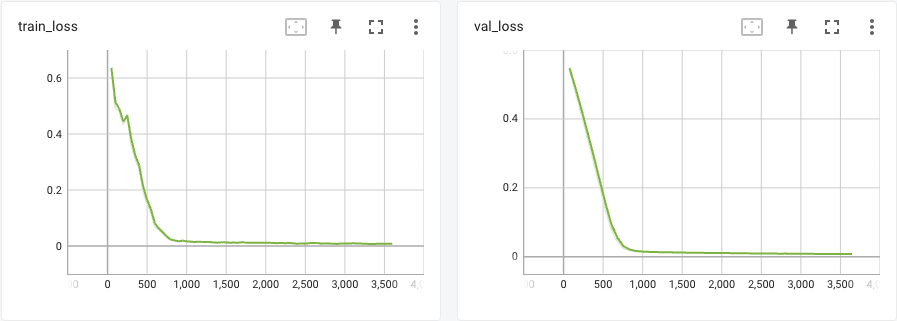
Visualizing a few examples of the forecasts, it looks reasonable in many cases.
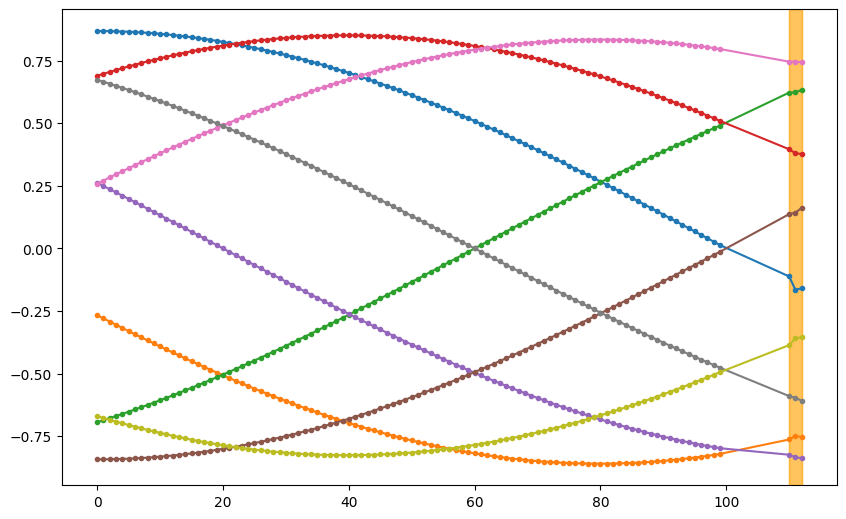
Similar to the single step forecast, we visualize a specific time step in the forecasts and comparing it to the ground truths. Here we choose to visualize the second time step in the forecasts.
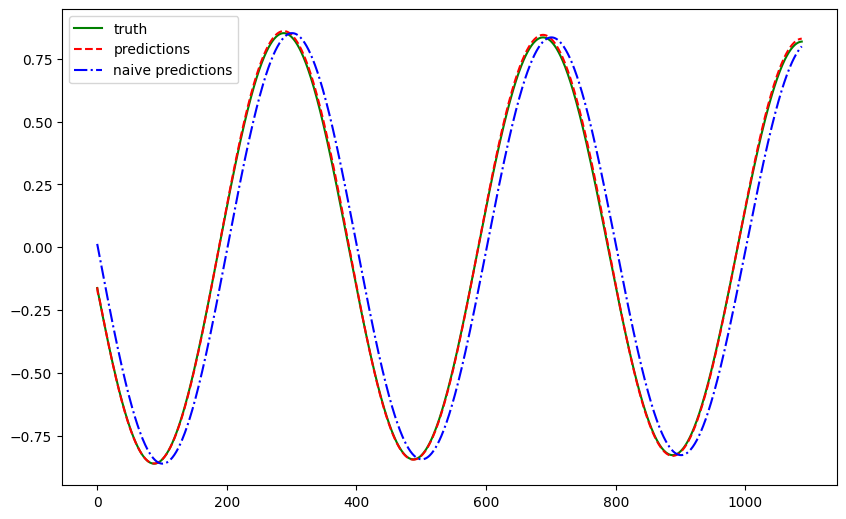
The metrics are listed in the following table.
| Metric | RNN | Naive |
|---|---|---|
| Mean Absolute Error | 0.006714 | 0.109485 |
| Mean Squared Error | 0.000069 | 0.014723 |
| Symmetric Mean Absolute Percentage Error | 0.032914 | 0.423563 |